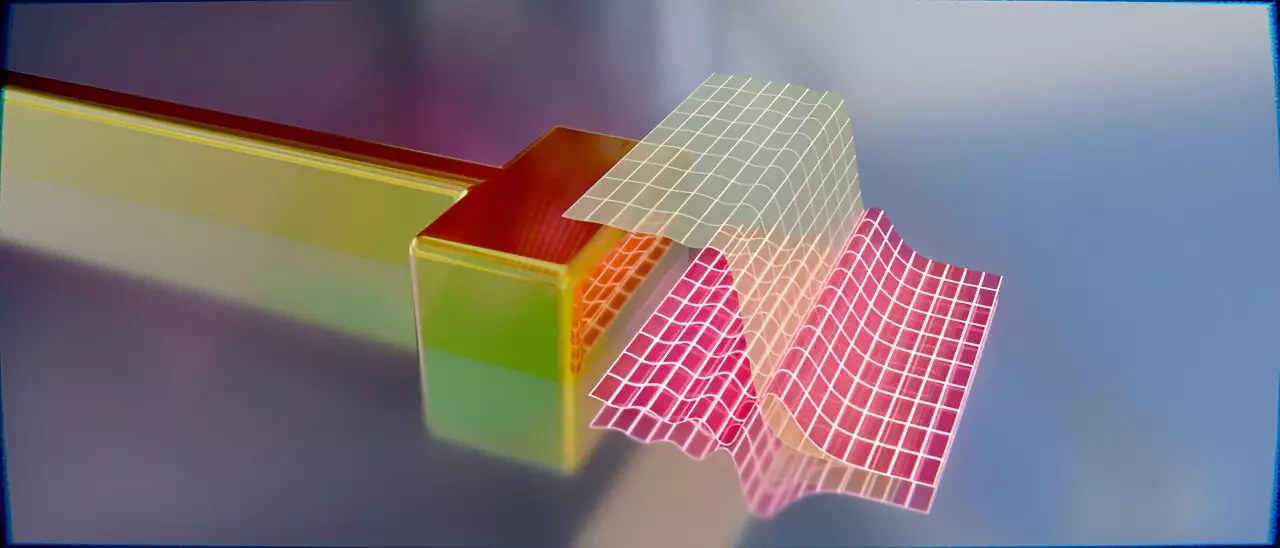As we advance through the digital age, one limitation that continues to confront the evolution of computing technology is the inherent speed barrier faced by conventional semiconductor components. Currently, most processors operate at frequencies measured in gigahertz (GHz) — representing a staggering number of computations per second, yet it is still insufficient for the burgeoning demands of modern applications. We find ourselves in an era of multi-chip coordination to distribute computational tasks, merely compensating for the shortcomings of individual chip frequencies. This strategy, while effective in some scenarios, highlights the urgent need for a technological leap that could deliver higher speeds.
A transformative solution appears on the horizon through the utilization of light (photons) rather than electrical currents (electrons) in computing environments. Photons, possessing inherent properties that enable them to communicate data more rapidly than electrons, have the potential to change the computing landscape as we know it. Researchers highlight that integrating light into computer chips could facilitate speeds that are up to 1,000 times greater than current capabilities. A promising avenue for achieving this breakthrough is the use of plasmonic resonators, or “optical antennas,” which create a vital interaction platform between light and electrons at the nanoscale.
Plasmonic resonators are minuscule metallic structures tailored to engage with light at specific frequencies determined by their geometric designs. However, one significant challenge remains: the difficulty in effectively modulating these resonators akin to traditional transistors, which are pivotal for enabling fast electronic switches. This limitation has stymied progress towards genuinely harnessing light-based computing technologies.
A collaborative effort led by the research team from Julius-Maximilians-Universität Würzburg (JMU) in Germany and Southern Denmark University (SDU) has targeted this limitation with groundbreaking results, marking a pivotal advancement in the modulation of light antennas.
The JMU team recently published their findings in the prestigious journal *Science Advances*, unveiling electrically controlled modulation capabilities in plasmonic resonators. Rather than attempting to alter the entire structure of a resonator, the team focused on the modulation of its surface properties. Achieving this feat required a sophisticated approach, including precisely contacting a gold nanorod resonator — a breakthrough made possible through advanced fabrication methods utilizing helium ion beams and gold nanocrystals.
The successful identification of subtle surface changes hinged on utilizing advanced measurement techniques involving lock-in amplification, which allowed for sensitive detection of alterations at the nanoscale.
Dr. Thorsten Feichtner, one of the leading physicists on the project, draws an analogy to the Faraday cage principle. Just as electrons are collected on the exterior of a vehicle during a lightning strike, the additional electrons induced on the surface of the plasmonic resonators exhibit a profound impact on their optical characteristics. This finding underscores a conceptual pivot from the classical descriptions previously used to explain the function of optical antennas.
For years, researchers maintained a largely classical view of these interactions, where electron behaviors were simplified as stopping abruptly at the edge of metallic nanoparticles. Nevertheless, the recent studies conducted by the Würzburg team revealed complex resonance alterations that defy classical explanations. The newly observed behaviors indicate a progressive transition, akin to the gradual contact of a beach and ocean waves, which introduces a necessary shift from classical understanding to acknowledging quantum phenomena at play.
To understand these unconventional effects, theorists at SDU have developed a semi-classical model merging quantum properties into a surface parameter for classical problem-solving methods. This significant development allows researchers to reproduce the experimental results while simultaneously deepening our comprehension of surface effects. The model adheres to a balanced framework integrating both classical and quantum mechanical perspectives, drawing nuanced insights into the behaviors of surface electrons.
However, one key aspect remains less clear: pinning down the specific quantum effects involved at the surface of the metals. While the newly proposed model does not disclose what individual quantum manipulations are at play, it opens up avenues for tailored design of optical antennas, allowing for selective amplification or suppression of certain quantum effects.
The implications of this research stretch far beyond the theoretical realm. The prospect of deploying smaller, highly efficient resonators for optical modulation could revolutionize technological applications in computing speed and efficiency. Furthermore, these advancements promise valuable insights into catalytic processes through the investigation of surface electron influences, ultimately paving the way for enhancements in energy conversion processes and storage systems.
As researchers continue to unravel the complexities of light-based computing techniques, we stand at a critical juncture in technology, where the marriage of photonic capabilities with computing could lay the groundwork for the next generation of ultra-fast systems. The exploration and innovation in this field herald a new epoch of computing, where speed is no longer a limitation, but rather a catalyst for unprecedented technological capabilities.


Leave a Reply